In This Article
Need a breath of fresh air in the nation’s capital? These scenic Washington, DC parks offer peaceful gardens, historic trails, and green spaces perfect for relaxing, strolling, or picnicking.
If you are in a hurry, I recommend:
- Iconic monuments and open lawns at the National Mall
- Wooded trails and waterfalls at Rock Creek Park
- Charming gardens and fountains at Meridian Hill Park
- Blossoming beauty and waterfront paths at Tidal Basin
- Family-friendly play areas and views at Yards Park
Unique DC Parks
1. Anacostia Park
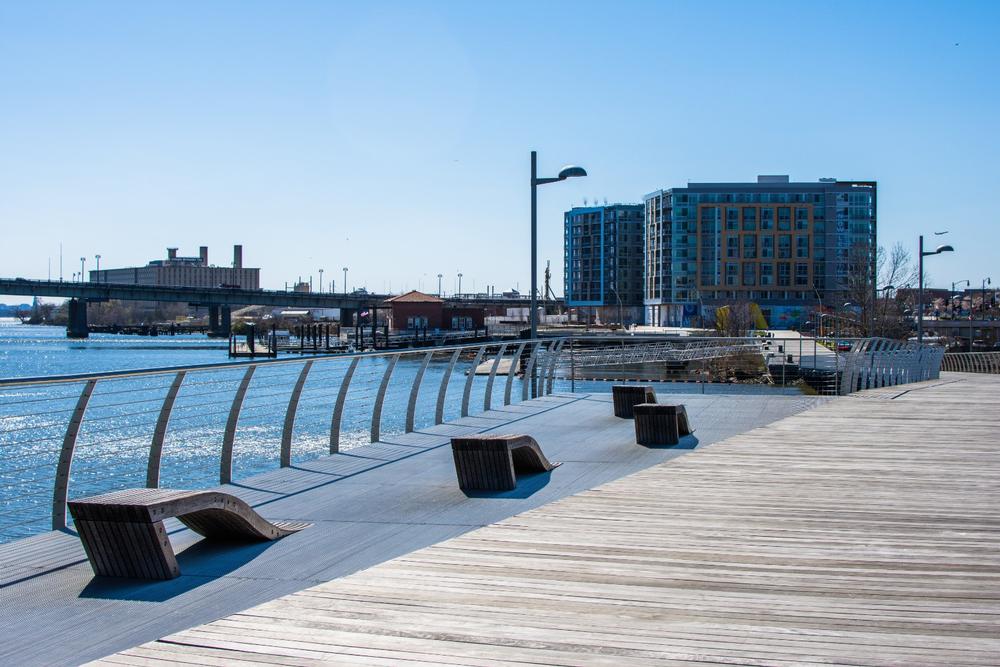
© Christian Hinkle/stock.adobe.com
Anacostia Park is one of Washington, D.C.'s largest public parks, spanning more than 1,200 acres throughout the city's Anacostia neighborhood along the Anacostia River waterfront.
The park, which has been overseen by the National Park Service since 1933, is developed around a seawall along the river's banks and is located at a Nacotchtank indigenous site originally explored by Captain John Smith in 1608. Park visitors can enjoy ample space for summer recreational activities, including day-use picnic sites at the Anacostia Park Pavilion, which is also home to a roller skating rink.
Baseball, basketball, and tennis courts are available for visitor use, along with the 18-hole Langston Golf Course, which offers a public driving range. A boat ramp is available for direct access to the riverfront, with three concession-operated marinas open to the public throughout the year.
Anacostia Park, 1900 Anacostia Dr, Washington, DC 20020, Phone: 202-472-3884
2. Battery Kemble Park

© tachjang/stock.adobe.com
Battery Kemble Park preserves the historic Battery Kemple fortifications, which were constructed in 1861 and served as the anchor of Washington, D.C.'s Fort Circle.
The fort, which was named for West Point Foundry superintendent Gouverneur Kemble, sites at a height of 387 feet above the Potomac River sea level, located in Northwest Washington's Palisades neighborhood along what is now Nebraska Avenue. Visitors can explore the remains of the National Park Service-administered battery, which was reacquired by the United States government in 1923.
Abundant populations of pine, chestnut oak, and bamboo trees line the park, which is home to a wide variety of native bird species. Running and nature walking are popular at the park during the summer months, which becomes a favorite family sledding spot during snowy conditions.
Battery Kemble Park, 3035 Chain Bridge Rd NW, Washington, DC 20016, Phone: 202-895-6070
3. Canal Park
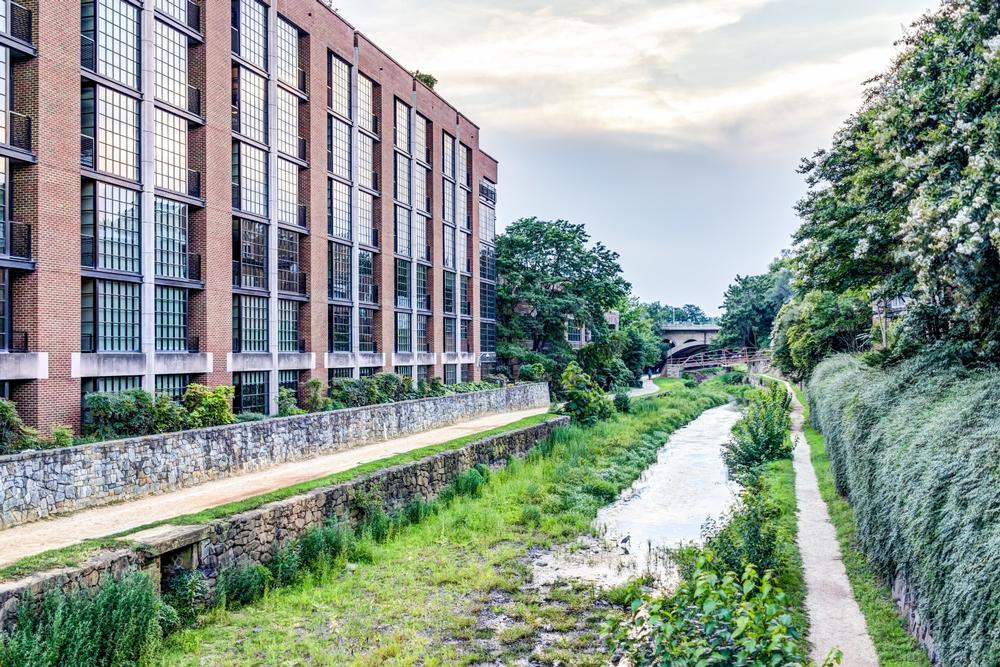
© Kristina/stock.adobe.com
Canal Park is a three-acre sustainable park in D.C.'s Navy Yard district, occupying three city blocks adjacent to the Navy Yard-Ballpark Metro station.
The park, which was designed and opened to the public in 2012, is named for the historic Washington City Canal, which operated throughout the first half of the 19th century to connect the Anacostia and Potomac Rivers via the National Mall. A linear rain garden in the park is designed to evoke the canal's memory, with three pavilions modeled to recall its former floating barges.
Low-impact ecological features include street-level runoff filtration systems, which manage stormwater and supply waters for the park's seasonal fountains. Throughout the year, the park hosts a variety of seasonal markets and public special events, including an outdoor ice skating rink operated during the winter months on the site of the park's fountains.
Canal Park, 200 M Street SE, Washington, DC 20003
Romantic DC Parks
4. The Capitol Hill Parks
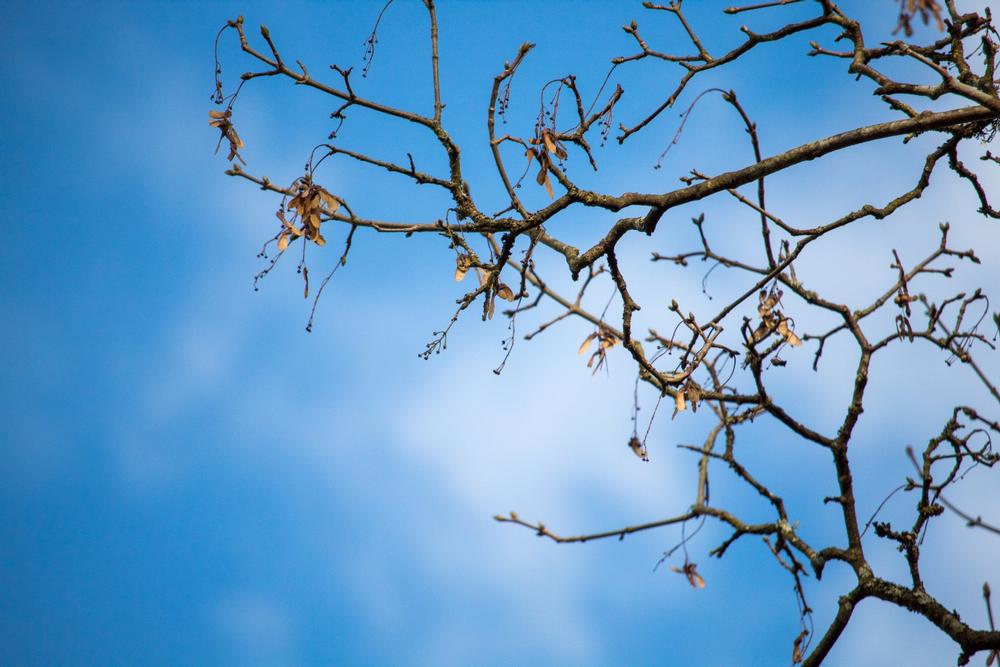
© kirollos/stock.adobe.com
The Capitol Hill Parks are an umbrella collection of a number of urban parks near the United States Capitol Building, all managed by the National Park Service as a single unit.
Four main parks in the unit include Capitol Hill's Folger Park, which is named in honor of Secretary of the Treasury Charles J. Folger and offers unique concrete-and-pebble fountain benches for relaxation and atmosphere. Lincoln Park, Capitol Hill's largest park, spans seven acres between 11th and 13th Streets NE and SE and is home to a grassy turf area popular with neighborhood dog owners. Marion Park, commonly known as Turtle Park, offers a children's playground, while Stanton Park, also referred to as Stanton Square, is preserved from Pierre L'Enfant's original city design.
Additionally, 59 city triangles and squares are also maintained under the park umbrella, including spaces at the Eastern Market Metro Station, Seward Square, Twining Square, and the Maryland and Pennsylvania Avenue Medians.
The Capitol Hill Parks, 1900 Anacostia Drive SE, Washington, DC 20020, Phone: 202-690-5185
5. The Chesapeake and Ohio Canal National Historical Park
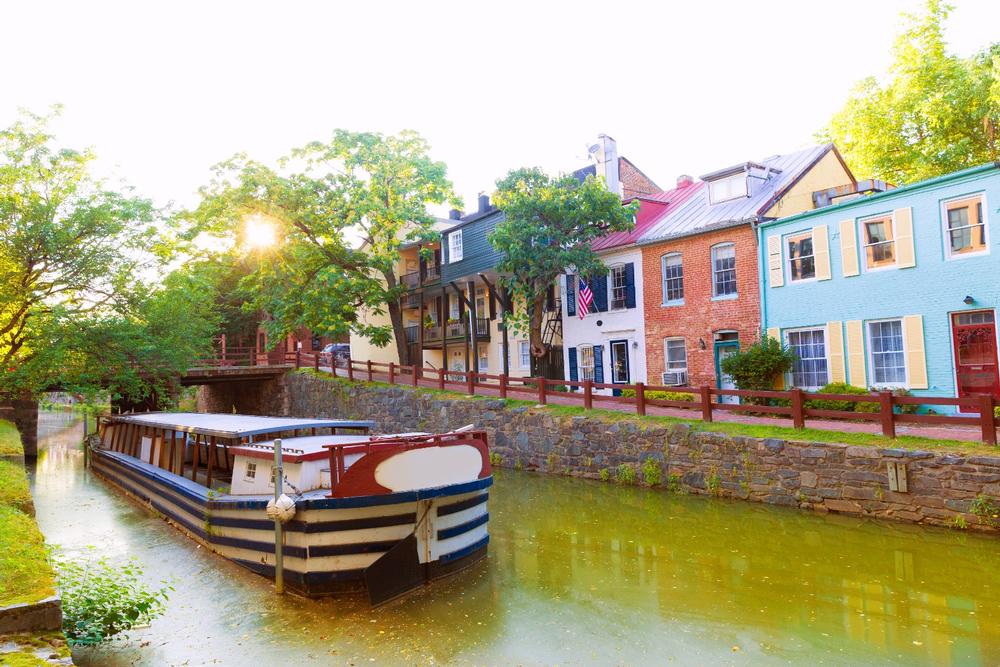
© Tono Balaguer/stock.adobe.com
The Chesapeake and Ohio Canal National Historical Park is an expansive national historical park spanning throughout areas of Virginia, Maryland, and the District of Columbia along the original C&O Canal towpath on the Potomac River.
The historic canal route, which operated between 1831 and 1924, served as a primary coal transportation route between the Allegheny Mountains and the Washington, D.C. region. In 1961, the former route was preserved as a National Monument in order to protect many of its historic structures. Today, more than 20,000 acres of park area is operated between Cumberland, Maryland and D.C.'s Georgetown neighborhood. Seven NPS-operated visitor centers throughout the park offer interpretive exhibits detailing the canal's history and use. More than five annual visitors also utilize the park's facilities for fishing, boating, hiking, cycling, and camping. Since 2013, a portion of the park's bicycle paths have been designated as part of the newly-created U.S. Bicycle Route 50.
The Chesapeake and Ohio Canal National Historical Park, 1850 Dual Highway, Suite 100, Hagerstown, MD 21740, Phone: 301-739-4200
6. Constitution Gardens
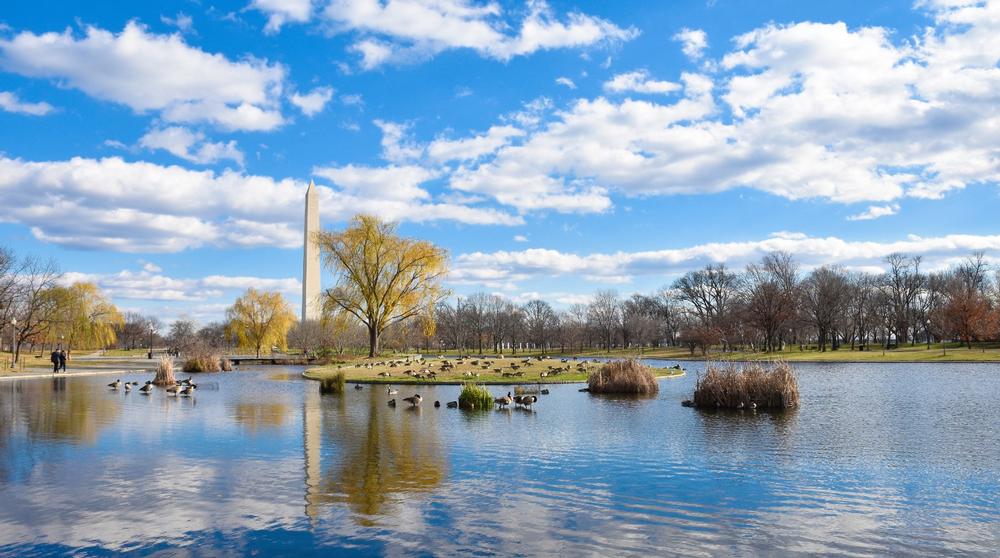
© Giuseppe Crimeni/stock.adobe.com
Constitution Gardens is a 50-acre park within Washington, D.C.'s National Mall, located adjacent to the Vietnam Veterans Memorial and the Lincoln Memorial Reflecting Pool.
The gardens' lands, which were once submerged under the Potomac River, were developed in the early 20th century by the United States Army Corps of Engineers and formerly housed offices for the United States Navy until the mid-2oth century. In 1976, the gardens were developed by landscape architect Dan Kiley and formally dedicated as part of the American Bicentennial celebration.
Since 1982, the gardens have been overseen by the National Park Service and attract several million annual visitors each year. A memorial to the 56 signers of the Declaration of Independence sits within Constitution Gardens Lake, which is framed by a semicircle showcasing the signatures of the Founding Fathers. Each year, the gardens host an annual immigration naturalization ceremony for new United States citizens.
Constitution Ave NW, Washington, DC 20024, Phone: 202-426-6841
7. Dumbarton Oaks
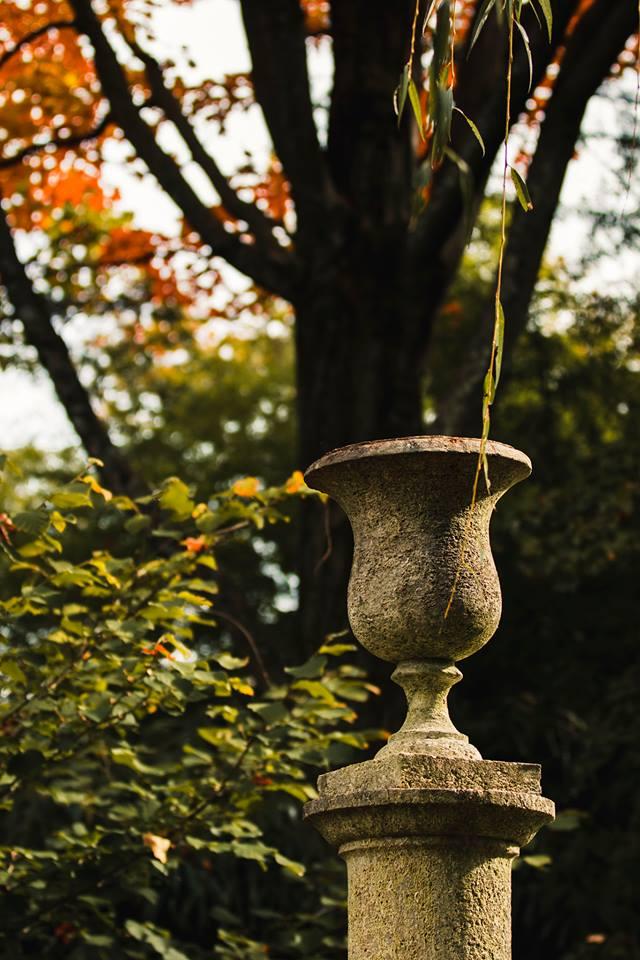
© Dumbarton Oaks
Dumbarton Oaks
is an historic estate within Washington, D.C.'s Georgetown neighborhood, best known as the former residents of Robert Woods and Mildred Barnes Bliss.
The property's use as residential land dates back to the turn of the 19th century, when it was acquired by William Hammond Dorsey. The estate that currently stands today is most attributed to Edward Magruder Linthicum, who gave the estate the name The Oaks, a reference to the residence of United States Vice President John C. Calhoun.
It was renamed as Dumbarton Oaks following its acquisition by the Blisses in 1920 and was substantially enlarged with Colonial Revival design elements, increasing its grounds to 54 acres of surrounding landscape. Today, the estate is home to a renowned research institute and museum collection, which features more than 200,000 significant research library items and substantial collections of Byzantine, European, and Pre-Columbian art. Its gorgeous estate grounds are open to the public as a 27-acre public park, overseen as a unit of Rock Creek Park. Seasonal events are held on the park's grounds, including lecture and concert series.
1703 32nd St NW, Washington, DC 20007, Phone: 202-339-6401
DC Parks for Couples
8. Fort Dupont Park

© thongchainak/stock.adobe.com
Fort Dupont Park is one of Washington, D.C.'s largest public parks, located near the Anacostia River waterfront and bounded by the neighborhoods of Greenway, Fort Dupont, Benning Ridge, and Penn Branch.
The park, which is named in honor of its Civil War-era fortress remains, is overseen by the National Park Service and encompasses the adjacent Fort Chaplin, Fort Davis, and Fort Stanton neighborhood parks. 10 miles of walking and biking trails are offered throughout the park, running between Grant and Erie Streets. Park visitors can enjoy opportunities for nature walking, picnicking, and ranger-led programming, with indoor ice skating opportunities offered throughout the winter months at the Benning Stoddert Recreation Center. Ranger-led programming elaborates on the park's Civil War fort usage. The park also presents a famed summer concert series each year, drawing notable regional and national touring acts.
Minnesota Ave SE, Washington, DC 20019, Phone: 202-426-7723
9. Fort Reno Park

© Alex Green/stock.adobe.com
Fort Reno Park is home to Washington, D.C.'s highest natural point, located within the city's Tenleytown neighborhood.
The park preserves the historic Civil War-era fortress of the same name, which was the location of the District of Columbia's only Civil War battle in 1864, when Confederate troops led by General Jubal A. Early attacked the fort as part of the Battle of Fort Stevens.
Today, the land surrounding the fort is overseen as a public park by the National Park Service and is home to a marker commemorating its 409-foot-elevation high point, overseen by the Highpoint Foundation. Baseball and tennis fields are open to the public for visitor use, along with several large grassy areas for relaxation and picnicking. Due to its elevation, the park serves as a popular spot for fireworks watching on the Fourth of July, as displays throughout Maryland and Northern Virginia are visible from its heights. An annual free concert summer series has been held each year at the park since 1968.
4000 Chesapeake St NW, Washington, DC 20016, Phone: 202-245-4715
10. Frederick Douglass National Historic Site
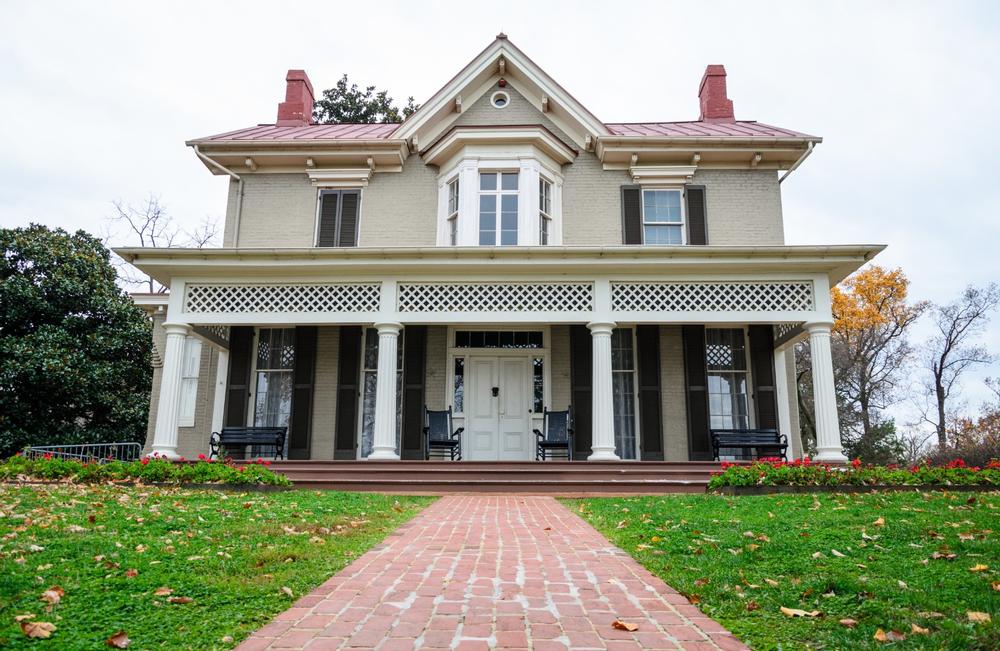
© Zack Frank/stock.adobe.com
Frederick Douglass National Historic Site honors the life and legacy of Frederick Douglass, one of the United States' most prominent African American citizens throughout the 19th century.
The site, which is located within Southeast D.C.'s Anacostia neighborhood, preserves Douglass' former Cedar Hill estate, where he lived from 1877 to 1895. The 20-room Victorian-style home served as a lookout point after Douglass' 1876 appointment as District of Columbia marshal and was host to many lavish high society parties throughout the remainder of Douglass' life. Since 1962, the house has been overseen by the National Park Service, open to the public as a living history museum facility offering daily half-hour guided tours. An interpretive center also offers exhibits on Douglass' life and career.
1411 W St SE, Washington, DC 20020, Phone: 202-426-5961
📔 I get asked this a lot so I decided to include it:
-
Question: What organization oversees Washington, D.C.'s public park facilities?
Answer: Washington, D.C.'s public park facilities are overseen by the National Park Service as part of the city's historic protected landscape.
-
Question: How many visitors explore Washington, D.C.'s parks and green spaces each year?
Answer: More than 24 million annual visitors explore the parks and urban green spaces of the National Mall.
-
Question: What iconic landmarks are located on the National Mall?
Answer: Iconic landmarks on the National Mall include the Washington Monument, Lincoln Memorial, and the cherry tree-lined Tidal Basin.
Best Time to Visit Parks in Washington, DC
- March to May – Mild temperatures, cherry blossoms in bloom, and perfect for walking.
- September to October – Cooler weather, vibrant fall foliage, and fewer crowds.
- June to August – Warm and humid, best for early morning or evening park visits.
- December to February – Quiet season with crisp air, ideal for peaceful winter strolls.
- Late March – Prime time for experiencing cherry blossoms and spring beauty.
Map:
Plan Your Trip












